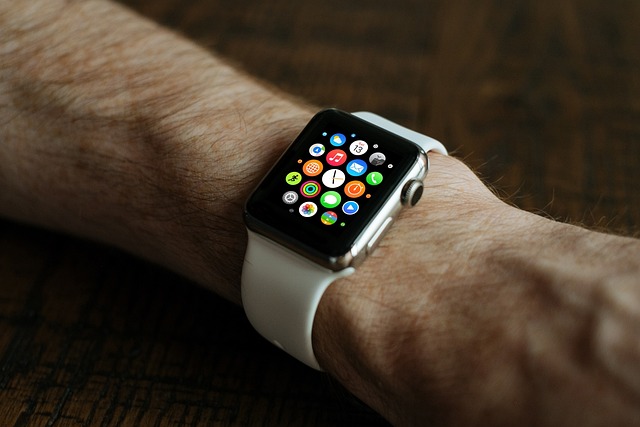Replacing an Apple Watch battery requires precision and careful adherence to manufacturer guidelines to avoid damage and ensure optimal performance. The process involves powering down the device, using a specialized toolkit for gentle disassembly, disconnecting and removing the old battery according to specifications, and reattaching the new battery with care. Post-repair, temporary performance issues may occur due to battery calibration; these issues typically resolve after a full charge and regular use. Users may face common post-replacement issues like connectivity problems or inaccurate sensor data, which can often be resolved by ensuring proper Bluetooth range, updating software on both devices, and recalibrating sensors through the Health app. Proper wrist fit is also essential for maintaining sensor accuracy. Advanced troubleshooting should be approached with data backup to prevent loss, and official Apple support should be utilized if issues persist. To maintain peak performance after a battery replacement, fully charge your Watch, restart it, re-pair with your iPhone, reset to reinitialize as a new device, install software updates, and consider resetting all settings if connectivity or syncing problems remain. Regular software updates and selective app usage can further enhance battery efficiency. Additionally, storing the Apple Watch in a moderate temperature environment and customizing 'Do Not Disturb' settings are recommended for long-term battery health preservation. Always ensure battery replacement is performed by an authorized service provider or through trusted self-service methods to guarantee device longevity and functionality.
When your Apple Watch’s battery life starts waning, replacing it can be a game-changer. However, after a battery swap, some issues may arise that can disrupt your experience. This article delves into the common challenges post-replacement and guides you through a step-by-step process to troubleshoot these glitches effectively. Whether you’ve opted for a professional service or embarked on a DIY project to replace an Apple Watch battery, understanding potential complications and how to address them is key. We’ll also offer tips to minimize the likelihood of future battery issues, ensuring your smartwatch remains a reliable companion. Master the art of maintaining your Apple Watch’s peak performance with our comprehensive insights.
- Understanding the Process of Replacing an Apple Watch Battery
- Common Issues Encountered Post-Battery Swap on Apple Watch
- Step-by-Step Guide to Troubleshoot and Fix Post-Replacement Glitches
- Tips for Preventing Future Battery-Related Problems in Your Apple Watch
Understanding the Process of Replacing an Apple Watch Battery

When addressing issues that arise after replacing an Apple Watch battery, it’s crucial to familiarize oneself with the proper replacement process. This procedure is a delicate task that involves carefully removing the old battery and installing a new one while ensuring no other components of the device are damaged in the process. The first step involves powering down the Apple Watch and using a suitable toolkit designed for electronic repairs to pry open the watch’s back casing. Care must be taken not to apply excessive force, as this could lead to cracked screens or bent internal components. Once the casing is removed, the battery can be disconnected from the motherboard, and the old battery is then carefully extracted. It’s imperative to follow the manufacturer’s guidelines precisely, as any misstep during this stage could affect the Apple Watch’s functionality or cause it not to power on at all.
After the new battery is placed inside the device, the casing must be reassembled without exerting undue pressure on the freshly installed battery. It’s advisable to follow a precise sequence of steps to ensure that every component is securely in place. The final step involves charging the Apple Watch for at least two hours before attempting to use it or to check if the replacement has been successful. Post-repair, users may notice some discrepancies in the device’s performance initially; this is normal as the new battery calibrates itself. Regular functionality should return once the battery is fully charged and the Apple Watch has completed a full cycle of usage. Throughout this process, it’s recommended to consult official Apple service manuals or reputable repair guides, which can be found online, to ensure that the replacement is executed flawlessly and that any issues encountered after the procedure are adequately addressed.
Common Issues Encountered Post-Battery Swap on Apple Watch

Following the replacement of an Apple Watch battery, users may encounter several common issues that can impact the functionality and user experience of their device. One prevalent issue is connectivity problems, where the Apple Watch might struggle to pair or remain connected with the associated iPhone. This can be resolved by ensuring both devices are within close proximity, the correct Bluetooth settings are enabled, and any necessary software updates are installed on both devices.
Another frequent post-battery swap concern is the inconsistent behavior of sensors and health tracking features. Sensor data may appear inaccurate or the Apple Watch might fail to accurately monitor heart rate or track workouts as expected. To address this, recalibrating the sensors through the Health app or resetting the Apple Watch can often restore normal functionality. Additionally, ensuring that the wrist is snugly fitted with the correct tightness, as recommended by Apple, will help maintain sensor accuracy. Users should also consult the official Apple support resources or visit an authorized service provider if issues persist after these initial troubleshooting steps. Remember to back up your data before any significant troubleshooting to prevent data loss. Replacing an Apple Watch battery can extend your device’s life and improve its performance, but being aware of these potential issues allows for prompt resolution and a smoother experience post-replacement.
Step-by-Step Guide to Troubleshoot and Fix Post-Replacement Glitches

If your Apple Watch’s performance seems off after a battery swap, it’s likely due to minor calibrations or software adjustments needed for optimal operation. Here’s a step-by-step guide to troubleshoot and fix post-replacement glitches, ensuring your device functions at its best. Firstly, allow your Watch to charge fully; a complete battery charge can help reset the system and recalibrate the battery meter accurately. Once charged, restart your Apple Watch to clear any residual memory or software issues. This can be done by holding down the side button and the Digital Crown simultaneously until the device turns off, then press and hold the side button again until the Apple logo appears.
Next, pair your Apple Watch with your iPhone as if it were a new device. This process will reset connectivity options and ensure that the watch is correctly synced with your phone. Navigate to the ‘General’ settings on your Watch, then select ‘Reset’ followed by ‘Resette as New Apple Watch’. After this, install any available software updates through the Watch app on your iPhone. Updates often contain fixes for issues encountered post-replacement and can improve overall performance. If connectivity remains an issue or if the time and data are not syncing correctly, ensure that both your Watch and iPhone are within close proximity of each other and that Bluetooth is enabled on both devices. Lastly, consider resetting all settings on your Apple Watch to address any persistent glitches. This can be accessed under ‘General’ in the Watch settings. Remember to back up your data before performing this action, as it will erase all custom settings and app data, except for the Health and Activity data, which are stored directly on the device. By following these steps, you can effectively resolve any issues that may arise after replacing your Apple Watch battery.
Tips for Preventing Future Battery-Related Problems in Your Apple Watch

If you’ve encountered issues after replacing your Apple Watch battery, it’s crucial to understand how to prevent similar complications in the future. Firstly, ensure that you’re using an authentic Apple Watch battery and that it’s installed correctly. improper handling or installation can lead to battery drain or other malfunctions. Additionally, keep your Apple Watch software up-to-date as updates often include improvements for battery performance. Monitor the battery usage regularly through the ‘Battery’ section in the Watch app on your iPhone. Identify and limit the use of applications that significantly drain the battery. Furthermore, consider customizing the ‘Do Not Disturb’ settings to reduce unnecessary screen wakeups, which can otherwise drain your watch’s battery life. Lastly, be mindful of the environment where you store your Apple Watch; extreme temperatures can affect battery health over time. By following these tips and taking proper care of your device, you can extend the lifespan of your Apple Watch battery and avoid future replacement needs. Remember to replace your Apple Watch battery at an authorized service provider or by following reliable guidelines if you plan to do it yourself to ensure the longevity and functionality of your smartwatch.
After delving into the intricacies of replacing an Apple Watch battery and addressing the common issues that may arise post-swap, this article has provided a comprehensive guide for troubleshooting and resolving those glitches. From understanding the process to equipping you with tips to prevent future battery-related problems, readers are now better equipped to maintain their Apple Watch’s performance after a battery replacement. By following the step-by-step troubleshooting advice outlined, users can ensure their device operates smoothly and efficiently, making “replace Apple Watch battery” a task performed with confidence and ease. If you’ve encountered any post-replacement snags, referencing this guide should have your Apple Watch back to optimal condition in no time.
